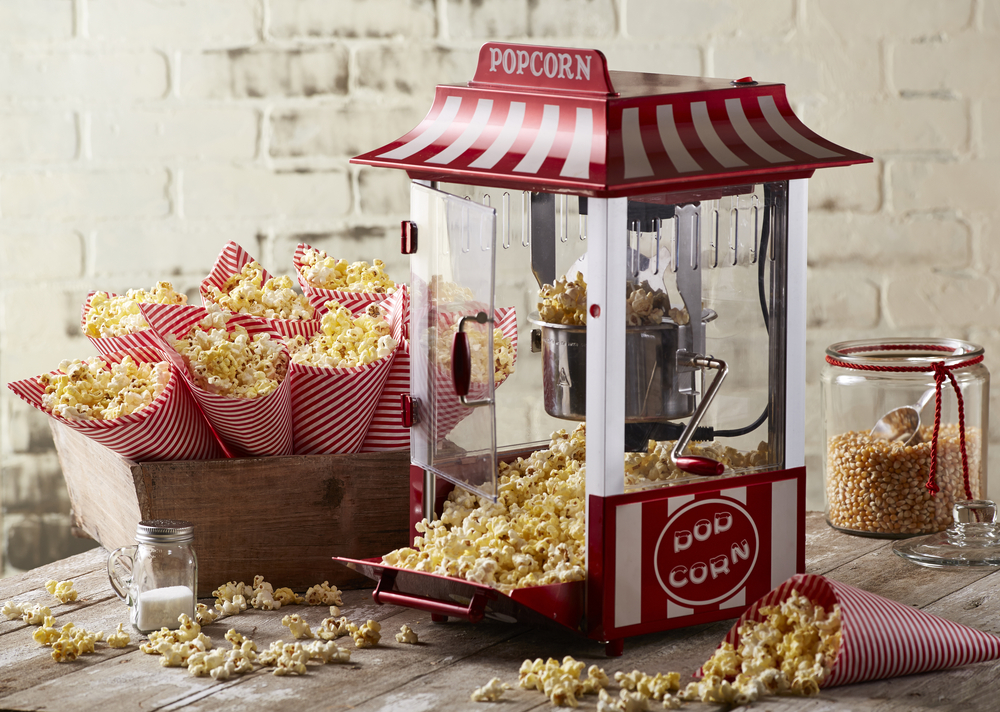Welcome to Facts Vibes! Get ready to indulge in the crunchy goodness of fun facts about popcorn. From its ancient origins to its modern-day movie companion status, we’ll explore the fascinating history and surprising trivia behind everyone’s favorite movie snack. Let’s dive into the world of popcorn!
Popcorn: Surprising Tidbits and Trivia
Popcorn has been a beloved snack for centuries, but there are many surprising tidbits and trivia about this popular treat. Did you know that popcorn is actually a type of maize? It’s a specific variety of corn with a hard outer shell that contains both a starchy interior and a small amount of moisture. When heated, the moisture inside the kernel turns to steam, causing the kernel to explode and puff up into the fluffy snack we all know and love.
Another interesting fact about popcorn is its long history. Archaeologists have found evidence of popcorn being popped as far back as 3600 BCE in what is now Peru. Native Americans also used popcorn for a variety of purposes, including food, decoration, and even as a form of currency.
In addition to its history, popcorn holds a special place in modern culture. It’s a staple at movie theaters around the world and is often associated with the cinematic experience. In fact, the tradition of eating popcorn during movies dates back to the early 20th century when street vendors would sell popcorn outside of theaters.
Furthermore, popcorn has some nutritional benefits. It’s a whole grain, high in fiber, and relatively low in calories when prepared without excessive butter or salt. This makes it a healthier snack option compared to many other popular treats.
In conclusion, popcorn is not just a tasty snack, but it also has a fascinating history and some surprising nutritional qualities. The next time you enjoy a bowl of popcorn, remember the intriguing facts that make this humble snack so special.
Most popular facts
Popcorn is a type of maize (or corn) that has a hard moisture-sealed hull and a dense starchy interior.
Popcorn is a type of maize (or corn) that has a hard moisture-sealed hull and a dense starchy interior.
The oldest ears of popcorn were found in a bat cave in New Mexico and are believed to be around 4,000 years old.
The oldest ears of popcorn were found in a bat cave in New Mexico and are believed to be around 4,000 years old.
Popcorn kernels can pop up to three feet in the air when heated.
True, popcorn kernels can pop up to three feet in the air when heated.
Americans consume 13 billion quarts of popcorn annually, which is roughly 42 quarts per person.
Americans consume 13 billion quarts of popcorn annually, which is roughly 42 quarts per person.
Popcorn is a whole grain and contains more antioxidants than many fruits and vegetables.
Popcorn is a whole grain and contains more antioxidants than many fruits and vegetables.
The world’s largest popcorn ball was created in 2016 and weighed 9,370 pounds.
The world’s largest popcorn ball was created in 2016 and weighed 9,370 pounds.
The term “popcorn” was first coined in the early 1800s.
The term “popcorn” was first coined in the early 1800s.
“Popcorn lung” is a term used to describe a lung disease caused by inhaling the artificial butter flavoring in microwave popcorn.
Sure, “Popcorn lung” is a lung disease caused by inhaling the artificial butter flavoring in microwave popcorn.
Popcorn kernels need a moisture content of
Popcorn kernels need a moisture content of 13.5-14%.
5-14% to pop.
This percentage represents the percentage of the population.
The majority of popcorn in the U.S. is grown in the Midwest, primarily in Indiana, Nebraska, Ohio, Illinois, Iowa, Kentucky, and Missouri.
Most popcorn in the U.S. is grown in the Midwest, primarily in Indiana, Nebraska, Ohio, Illinois, Iowa, Kentucky, and Missouri.
The ideal popping temperature for popcorn is 400-460 degrees Fahrenheit.
The ideal popping temperature for popcorn is 400-460 degrees Fahrenheit.
The world record for the most popcorn eaten in one minute is 22 individual kernels.
The world record for the most popcorn eaten in one minute is 22 individual kernels.
Popcorn was popularized in the United States during the Great Depression as it was a cheap snack.
Popcorn became popular in the United States during the Great Depression as it was a cheap snack.
In the 1890s, popcorn sellers were banned from entering movie theaters because the noise was seen as disruptive.
In the 1890s, popcorn sellers were banned from entering movie theaters because the noise was seen as disruptive.
The best shape for a popcorn kernel is generally considered to be “butterfly” because it has more surface area for coatings like butter and salt.
The best shape for a popcorn kernel is generally considered to be “butterfly” because it has more surface area for coatings like butter and salt.
In conclusion, popcorn is not only a delicious snack, but it also holds many fascinating facts that make it even more enjoyable to indulge in. Whether it’s the popping process, historical significance, or nutritional benefits, there’s no denying that popcorn is truly a remarkable treat with an abundance of fun facts to savor.
